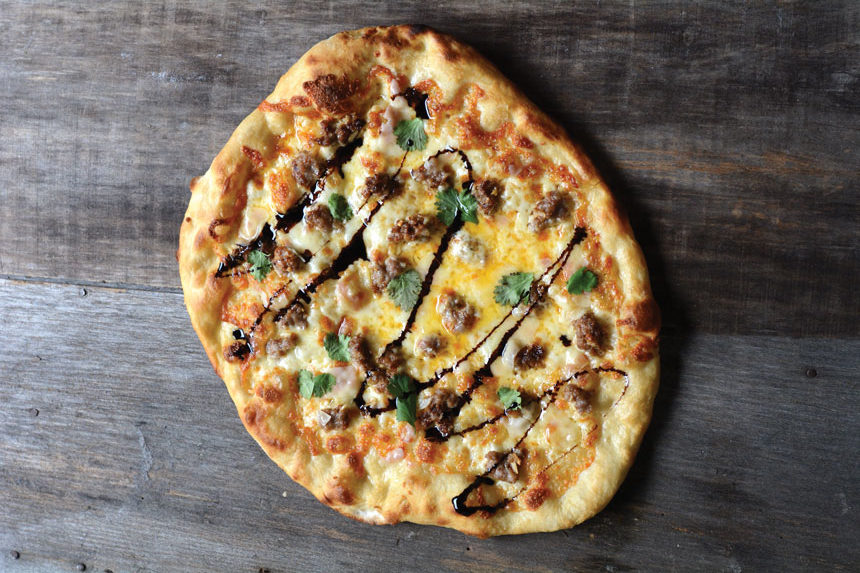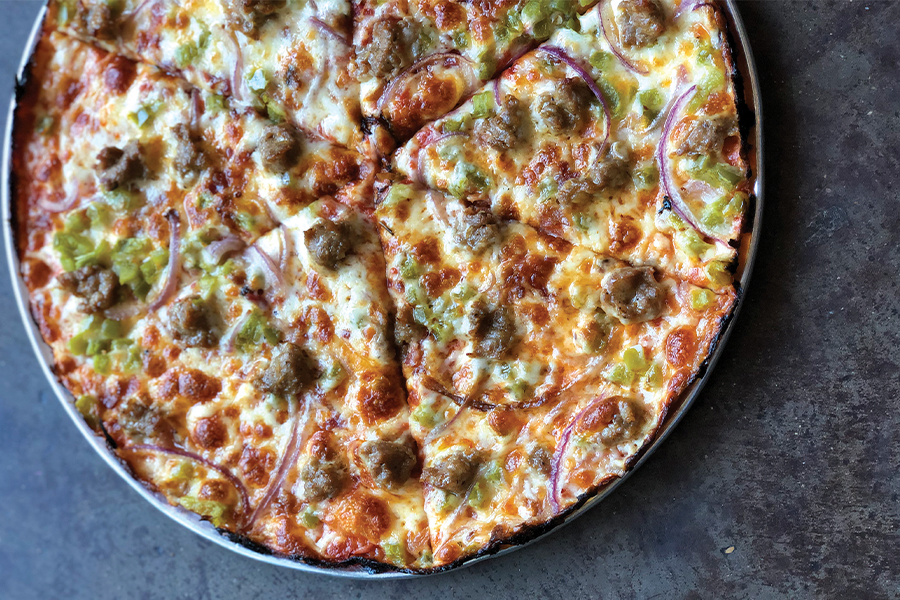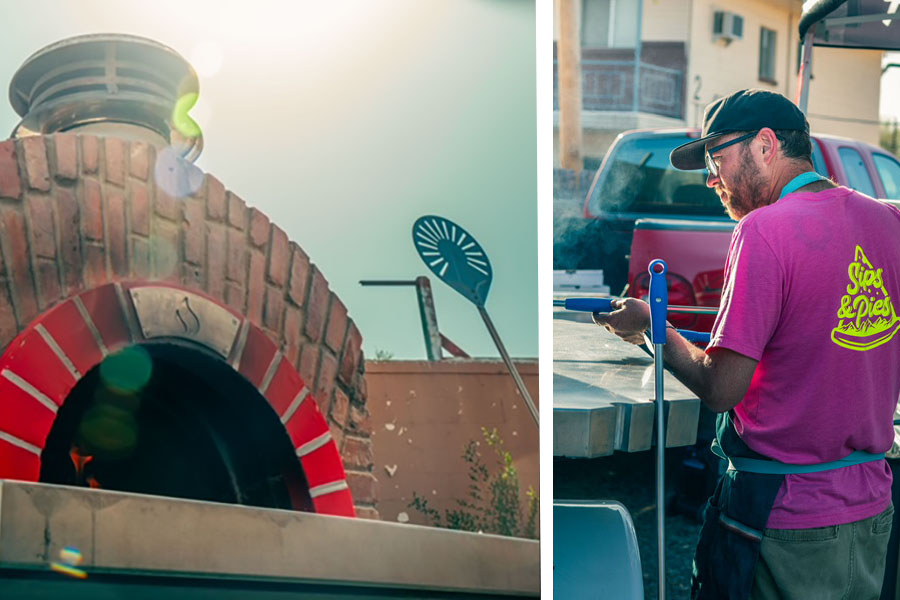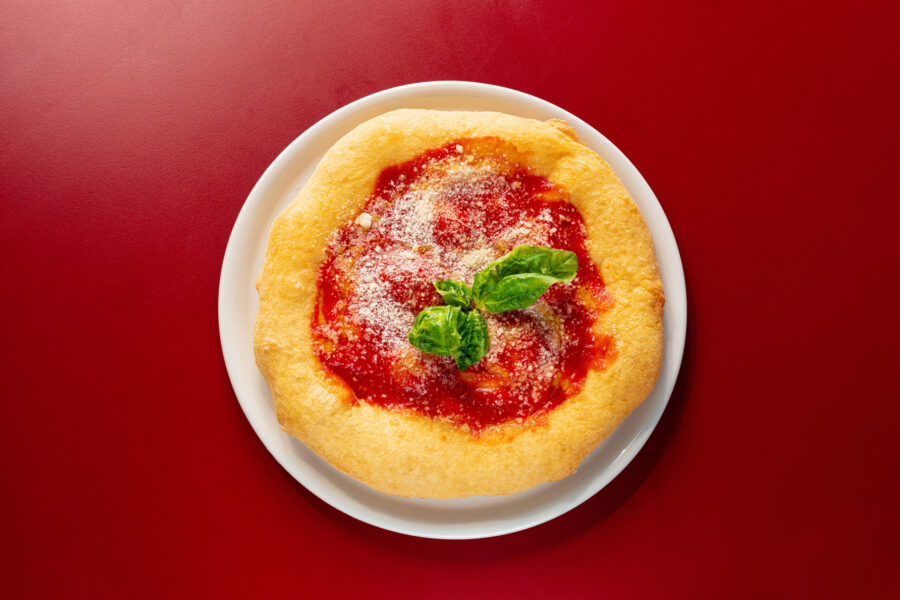Wurst Case Scenario: Explore fresh sausage ideas and recipes
There have been many different sausages that have made their mark in history. In ancient Athens, Greece, hog puddings and sweetened sausages were all the rage and “the stuffed paunch of an ass was a delicacy.” The early Romans added this to boiled barley and wheat paste to eat regularly. Early in the Wei and Jin dynasties (300-500 AD), the famous Lap Cheong, meaning “winter stuffed intestine” was invented. In 1313, the first documented evidence of Bratwurst surfaced in Nuremberg, Germany. The more flamboyant Irish had a great initiation to any king taking the throne in 12th Century. To win his crown, he first had to take a bath in a vat of fresh horse meat and blood soup while his attendants ate blood sausages. Innovative sausage making is part of human history and, as pizzeria owners and operators, there is no reason to not ride the wave of new and exciting alternative sausages. Now, let’s get this sausage party started!
There are many wonderful sausages you can make in your pizzeria using ground proteins like Curried Chicken, Dilled Shrimp, Blueberry Duck, Shrimp and pork, Porcini Beef and Cranberry Turkey sausage. Spices in sausage range from thyme, Fennel, sugar, za’atar, Espilette Pepper powder, Italian spices, Chinese 5 spice, lemon zest and cumin to Szechuan peppercorn, lemongrass, ginger, cilantro, mustard, basil, rosemary, celery seed, caraway, cinnamon, paprika, vinegar powder, lemon zest, soy sauce powder, brown sugar and allspice. Now, let’s look at the basics.
Let’s be Frank: Explore categories of sausage
Sausages can fit into many different categories depending upon the outcome you want in your pizzeria. This calculation of making your own sausage is expanded by your tolerance for costs like labor, sourcing fresh product, quality control, staff training, equipment needs and your physical plant limitations. Here are the various categories of sausage.
Fresh Sausage: It is neither cooked nor cured and needs to be consumed within a few days or frozen for up to six months. Salt and spices are usually the only preservatives. Fresh sausage tastes best placed on a pizza in a finger-pressed coin the shape of a quarter or nickel. The fat released into the melting cheese is unforgettable. Classic fresh sausages can be made this way like the Toulouse, Lincolnshire and the Cumberland sausages, as well as Scottish White Pudding, Italian Cotechino, and French Boudin Noir and Boudin Blanc.
Cured Sausage: This category is filled with the likes of salami, chorizo and pepperoni, which are designed to be eaten raw or cooked. Cured sausages need to be matured in a cool, humid environment before they are eaten to ensure that the “bad” bacteria are inhibited, and the “good” bacteria thrive. Cured sausages are designed to be consumed over a period of several weeks without significant deterioration. This is achieved with a combination of salt, temperature, humidity and even with starter cultures and nitrates and nitrites. Other fabulous, cured sausages include the Italian Sopressata, Cacciatorini, the Portuguese Linguica, the Spanish Salchichon, and even the Pennsylvania Dutch Lebanon Bologna.
Precooked Sausage: These are obviously cooked or partially cooked by either blanching in very hot water like the Boudin Blanc or by hot smoking them like the Polish Wiejska. Most of these sausages need further heating before consuming. Other pre-cooked sausages are the New Zealand Saveloy, the British Black or Blood Pudding and Haslet, the Scottish Haggis, and the French Cou d’ Oie Farci which is the goose/foie gras/truffle/morel sausage stuffed inside a goose neck skin- yum!
Fish and Veggie Sausage: This category is gaining popularity and includes many techniques. In the past, the veggie sausage category was dominated by too much tofu but now chefs are exploring the textural qualities of mushroom and root vegetables to make some delicious sausages. Fish and shrimp sausages are delicious either stuffed in casings or steamed into round or long sausage.
Missing Links: Making Sausage
Planning your new shift to fresh sausage shouldn’t be so scary. I have used only fresh local ground pork and made my own proprietary sausage for over 15 years. We fabricate it in two ways; as a loose, spiced cooked sausage crumble and a wet fresh sausage. I’ve also made cured sausages in a curing cabinet (white wine cooler) for a delicious result. Here are a few things, of the many, that you need to wrap your head around when making sausages.
Salt: Sodium chloride is the linchpin in all sausage making. It pulls water out of food and helps lower pH levels that protects meat from bacteria. You must always measure salt by weight instead of volume to avoid oversalting. I recommend using Morton’s kosher salt because it is almost always right on in the volume-to-weight ratio, meaning ½ ounce equals 1 tablespoon. A salt recipe using 2.5% salt for 5 pounds of meat will require ¼ cup of this salt. This creates a seamless protocol for staff making sausage.
Curing Salts: Nitrates have been given a bad rap these days but they, like Nitrites, (different term) are naturally occurring chemicals in our bodies. Nitrates are converted to nitrites which work as an antibacterial agent, especially in an acidic environment, like our stomachs. Nitrates in sausage keep harmful microbes from growing, especially the botulism toxin.
Pink Salt: Nitrates are sold as Pink Salt #1 and Pink Salt #2. #1 is used to cure meats that will be cooked, grilled or smoked after a short curing time and #2 is used to cure meats that require a long curing time. Both salts should be used in minute quantities with a ratio of 1 oz./30g per 1 pound/450 g. of meat. Many fresh sausages don’t need the help of pink salt.
Fresh Beef ‘Nduja Sausage
This is a major flavorful way to spice up beef on a pizza. I fully admit that this is an appropriation of the iconic Calabrian pork sausage recipe that is smoked and fermented but I don’t have the time, (and too much ground beef) to make the real deal. I’ve found that adding the gochujang and holding the sausage to cure under refrigeration mimics that wonderful fermented “tang” and, along with the spice and sweetness of the red peppers, makes for a great pizza topping. Perfect with Gruyere, Gouda, Kashaval, Comte and even mild blue cheeses.
Get the Fresh Beef ‘Nduja Sausage Recipe.
Fresh Italian Sausage
This is a fail-safe way to spice up freshly ground pork. The distinguishing flavors of all the fennel and spices combined with the slow and low heat from the pepper flakes and zing from the vinegar powder really makes for a great sausage. You can also add ricotta and Parmigiano for a milder, lighter sausage or even meatballs.
Get the Fresh Italian Sausage Recipe.
Fresh Duck and Cherry Sausage
This sausage has all the components of a great duck dish. Ground duck can be very wet depending upon how much skin was ground up with it. This is why I add Parmigiano to the mix. You may add some panko breadcrumbs if it is even wetter. The sweetness of the cherries is juxtaposed by the luscious duck and is elevated by the lemon zest and nuanced cumin. This sausage is great with Pecorino, Asiago, Ricotta, Chevre, Brie and even… more fresh cherries!
Get the Fresh Duck and Cherry Sausage Recipe.
JOHN GUTEKANST owns Avalanche Pizza in Athens, Ohio.








